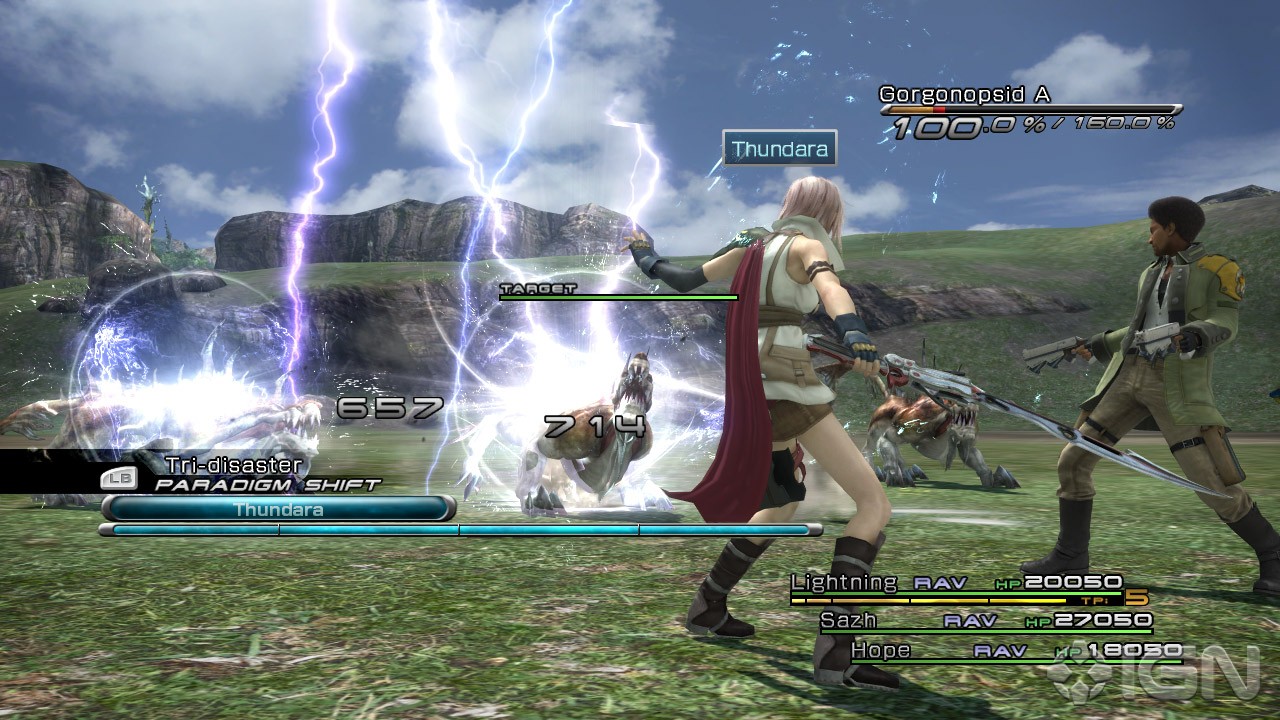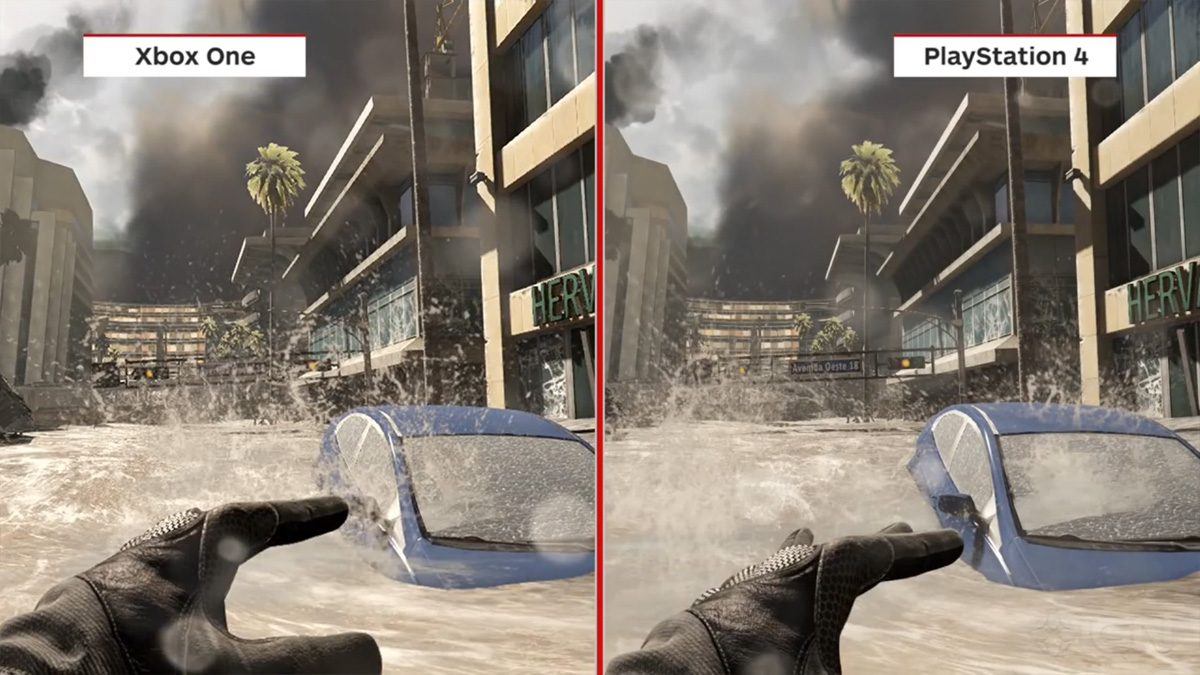Someone posted this article in a Facebook group I frequent. What ensued was another divisive, albeit mostly civil discussion that I found rather fascinating. It made me reflect on this subject of graphical fidelity in the new consoles pretty heavily. I decided that I wanted to share my thoughts on the subject here for all the Internet to see.
Framerate
Higher frame rates result in smoother looking movement. However, the question always arises: how high is too high? At what point does an increased frame rate result in an imperceptible difference to the human eye? According to my scouring of the net, this question is not easily answered and there does not appear to be a clear answer. All I can do is use my personal experience to make up my own mind.I spent nearly a decade playing World of Warcraft. I would consistently see the public chat discuss how the game was running for different players. I heard people talk about running at 90 fps or higher, and others complaining about only getting 30-40 fps. When I checked my fps, I was lucky to break 20. And you know what? It didn't matter to me. My character at least looked like it was moving somewhat naturally. Sure, when the fps increased, it looked even better. But, was it detracting from my experience knowing that it could have been X times better? Not at all. To me, it met a minimum requirement, and that was good enough for me.
Resolution
We live in a day and age where most people who decide to buy a PS4 or an XB1 probably own (or have access to purchase) an HDTV. Many, if not most, of these HDTVs are capable of some form of 1080 resolution. Now, it is a truth that the XB1 does not natively output full 1080p video, whereas the PS4 does. And you know what? The majority of people buying consoles will probably never tell without really scrutinizing the picture. Here's an example of PS4 - XB1 graphics differences at 1080p (taken from the GamingBolt article linked above):To me, the differences are very slight. The PS4 image seems to have somewhat softer edges in general. But...step away from your screen by a couple of extra feet and you'll probably not be able to tell a difference anymore. Now, here's another example (again, from GamingBolt):
I can see a bit more of a difference in the water in this pic, but little else. I actually like the reflections coming off the car more in the XB1 (left) picture, personally.
But, do you see my point? The differences are very minute. To the Average Consumer, these differences will be so slight that they will probably not make as much of a difference when it comes to purchasing decisions than game selection and brand loyalty.
Next-Gen Increases Are Getting Smaller
When the first gameplay footage of a game running on PS4 and XB1 was shown, I heard a major outcry from the gaming community at large: "That doesn't look better than they do now!" And I kind of agreed. But then I thought about it. The difference between PS1 and PS2 was huge. Case in point: |
| Final Fantasy VII on PS1 |
 |
| Final Fantasy X on PS2 |
 |
| Final Fantasy XIII on PS3 |
| Final Fantasy XV (unreleased) on PS4 |
Consoles Are Moving Away from Being Just About Games
Both the PS4 and XB1 are pushing social features such as game recording and/or streaming. Sharing your game experience with friends is a major push so far with the new generation of consoles. As long as social media continues to dominate our Internet-fueled society, I imagine this will only become more and more integrated into the console experience. I would dare to predict that Gamertags and PSN IDs will eventually become a sort of gamer manifesto that people will become greatly attached to. When asked which new console I will default to for cross-platform games, I stated I would pick XB1. I made this decision because I'm more invested in my gamertag and achievements than I am with my PSN ID and trophy collection. If these keep carrying over from console generation to console generation, brand loyalty will likely increase greatly and become more and more of a deciding factor for consumers.In the case of the XB1, Microsoft decided to include an HDMI pass-through with the main intention of allowing users to connect a cable box to their Xbox so they can watch television on their console. Time will tell how much consumers use this function or if other uses are found and how much effort Microsoft and other hardware manufacturers decide to invest in it in the future.
Regardless of the specific functions, extra features are being designed around the gaming experience that is ultimately as the core of a console experience. We will likely see this grow and expand as time goes by.
Who is Buying Consoles, and Why?
Since November when the PS4 and XB1 launched, millions of each console have been purchased by consumers. Despite lackluster lineups from each console, it's been a fantastic beginning to a new generation so far. But, let's think about the different types of people who are buying consoles:
Professionals: These are games journalists and eSports players. True, some of these consumers may receive their hardware directly from the manufacturers, but they still count.
Gifters: These consumers do not use the consoles themselves, but usually choose to buy them as a gift for a loved one, usually their children. These consumers may simply be buying what they were told to get and may or may not be very well informed on the differences between consoles.
Casuals: These are the consumers/gamers who play games from time to time, but do not necessary dig too deep. They buy a few new games per year and spend most of their time on those.
Hardcore: These are the gamers who will buy as many new games on a console that they can afford. They will play through a new game in a matter of days, and replay it multiple times. These are consumers who will prestige on COD many times over, max out each class on Borderlands, make Let's Play videos and write walkthroughs.
We can probably come up with more categories than just these four, but this is a pretty simplistic cross section of the console market. Of these four, which group is most likely to notice the subtle nuances between consoles? The hardcore, that's right. These are the gamers who will be spending the most time with their hardware and will want to make sure they are having the pinnacle in available hardware. You could even call them gaming aficionados, not unlike how a sommalier is a wine aficionado. When you spend that much time with something, you being to understand, recognize and criticize it. So, when someone tells me that the majority of gamers will notice the differences in frame rate and resolution shown in the pictures from above, I have a hard time believing that. If a consumer buys one console for reasons of their own and never even looks into the other, how will they know what they are missing?
Games Tend To Evolve During Each Generation
Ever since game consoles have existed, there has been a distinction between how games look when they are are developed and released at the beginning of the console's lifespan, and the ones that are developed and released at the end of the console's lifespan. This happened with Atari 2600: | ||
| Combat (1977) |
 |
| Rampage (1989) |
 |
| Super Mario Bros. (1985) |
 |
| Alien 3 (1993) |
Sega Genesis:
 |
| Sonic The Hedgehog (1991) |
-4.png) |
| Sonic 3D Blast (1996) |
These are just a few examples of how games have increased in detail and style within the lifespan of a single console. In the case of the 16-bit era, developers even found new ways to use already existing hardware, such as implementing parallax scrolling, mode-7, and even took systems generally used for 2D side-scrolling and found ways to create 3D visuals. These intragenerational advances continue to happen today. For example, here are some Xbox 360 comparisons:
 |
| Call of Duty 2 (2005) |
 |
| Call of Duty Black Ops 2 (2012) |
This is further complicated by the fact that there have not yet been any games developed for and released solely on both of the new generation consoles. Battlefield 4 and Assassin's Creed 4 were cross-generational so they needed to be scalable. Those games simply will not push either console to it's limits as we understand them so far. The engines they were built on needed to be accessible to both generations. Even Destiny and Watch Dogs are going to be cross-generational and still won't be good benchmarks to compare the two new consoles. You can try to compare console exclusives, but again, you run into the trouble that these games, such as Dead Rising 3 or Ryze (XB1) and Killzone Shadow Fall or Knack (PS4) are using engines incompatible with their competing console. Until a game is developed for and released on PS4 and XB1 only (and probably PC), we will not have a good comparison of how well each console looks compared to the other.
I, for one, look forward to a day where we can fairly compare the PS4 and XB1 together on equal footing. By then, I hope to have a PS4 in addition to by XB1. Both consoles have aspects I like and dislike, as well as exclusive games that appeal to me. A console no longer needs to be judged solely on it's capability to deliver ultra photo-realistic graphics at the smoothest frame rate and highest resolution possible. Resurgence of retro gaming and appreciation of simplistic graphical styles indicates that the new consoles don't even NEED all the power they have reserved for gaming all the time. Ultimately, the decision about which console is best comes down to personal preference and what is important to any given consumer. While one or the other may be objectively more powerful, what matters is the overall enjoyment a consumer derives from his or her time with it. That enjoyment may come from the graphical quality, or it may not. Just figure out what you want, and go with it.
The flame war between the consoles and their minute graphical differences needs to stop.
Gnome out.
Note: None of the images in this article/post belong to me. I found everything but the GamingBolt pictures from random Google Images search results. Rights for each picture belong to their respective owners.




No comments:
Post a Comment